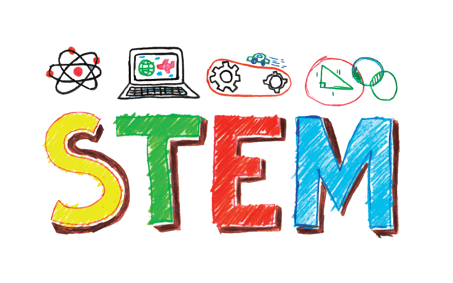Altiplano Design Insights
Exploring the beauty and creativity of design in everyday life.
STEMming the Tide: Why Your Child Needs a Splash of Science
Unlock your child's potential! Discover how a splash of science can inspire a love for STEM and shape their future. Dive in now!
5 Fun Ways to Introduce Your Child to Hands-On Scientific Learning
Hands-on scientific learning is a fantastic way to ignite your child's curiosity about the world around them. One of the most enjoyable methods is through science experiments that you can easily conduct at home. For instance, you can create a simple volcano using baking soda and vinegar. This not only illustrates chemical reactions but also encourages your child to ask questions and observe the outcomes. Other fun activities include making slime, growing crystals, or even conducting simple physics experiments with everyday household items.
Another engaging way to introduce your child to hands-on scientific learning is through nature exploration. Take them on a nature walk, where you can collect leaves, rocks, and insects. Use a magnifying glass to examine the details up close and discuss the different ecosystems you encounter. You can also create a science journal where your child can document their findings and draw pictures of their discoveries. This not only fosters a love for science but also enhances their observational skills and connects them with the environment.

The Importance of STEM Education: Empowering Future Innovators
STEM education—encompassing Science, Technology, Engineering, and Mathematics—plays a crucial role in preparing students for the challenges of the 21st century. As we advance into an increasingly technological world, a strong foundation in these fields becomes essential for fostering critical thinking and problem-solving skills. By integrating hands-on activities and real-world applications, STEM programs not only engage students but also inspire them to pursue careers as innovators and leaders in their respective domains.
Moreover, STEM education promotes inclusivity and diversity in the workforce. By encouraging participation across different demographics, we empower future generations to bring diverse perspectives to technological advancements and scientific discoveries. As the global economy shifts towards innovation-driven growth, investing in STEM education ensures that we are cultivating a pool of talent equipped with the skills necessary to solve complex challenges, drive economic development, and lead us into a sustainable future.
How Science Sparks Curiosity: Engaging Activities for Young Minds
Science is a gateway to discovery, igniting a flame of curiosity in young minds. Engaging children in hands-on activities not only enhances their understanding of scientific concepts but also fosters a lifelong love for learning. By exploring the world around them, kids can formulate questions, develop hypotheses, and conduct experiments that promote critical thinking. Simple activities such as:
- Creating a homemade volcano with baking soda and vinegar
- Building a mini-rocket using plastic bottles
- Observing the life cycle of plants by starting a garden
can pique their interest and encourage them to delve deeper into scientific principles.
Moreover, making science fun and interactive allows children to connect theoretical knowledge with practical experiences. When kids engage in science-based projects, they not only cultivate skills like problem-solving and analysis but also boost their creativity. For instance, conducting a simple experiment to test the effects of sunlight on plant growth can lead to discussions about ecosystems and environmental responsibility. As young explorers navigate through these engaging activities, their curiosity expands, paving the way for future innovators and thinkers. Encouraging questions and investigations fuels their desire to learn more about the fascinating world of science.